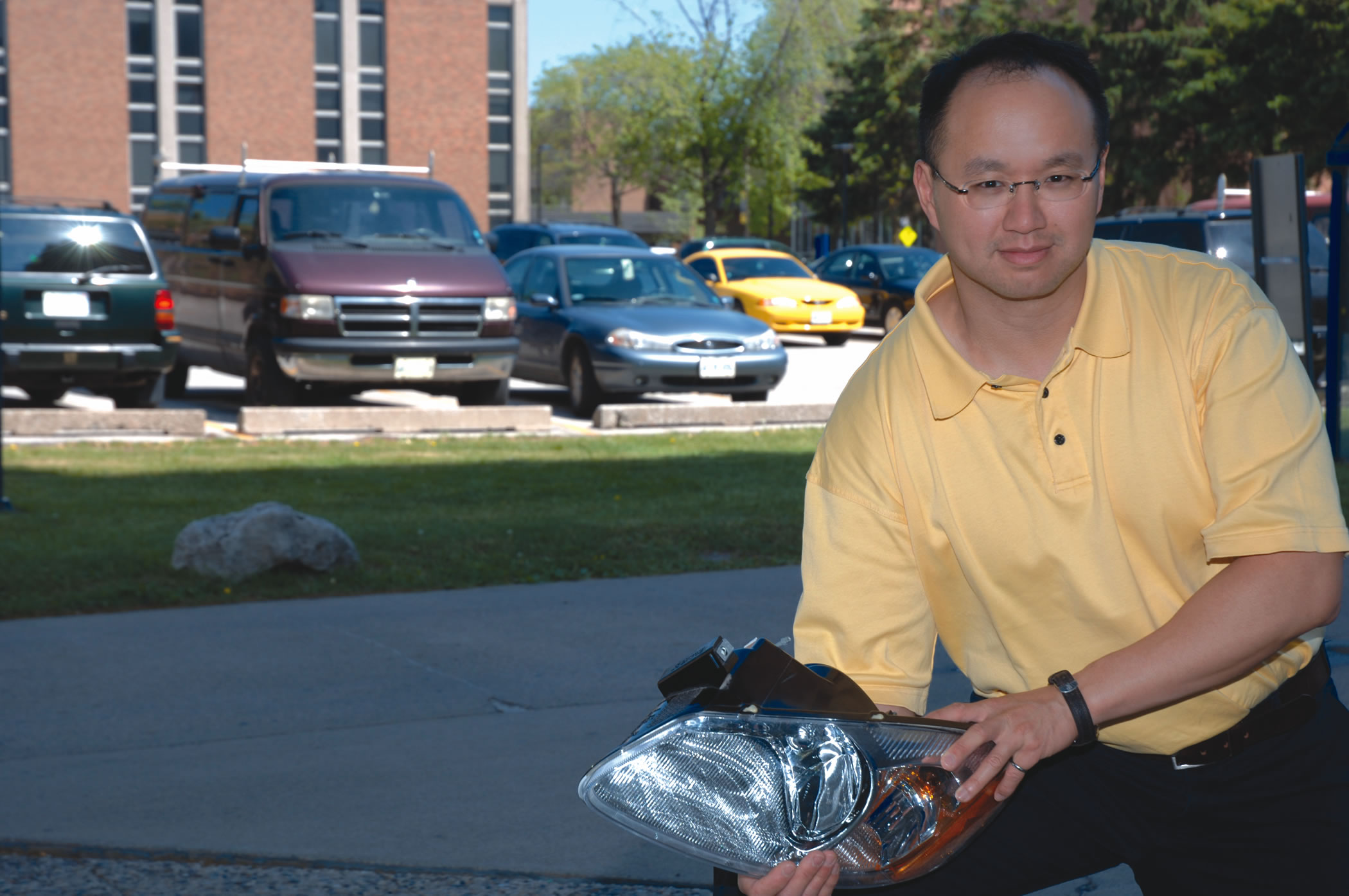Fellowship Provides Opportunity to Encourage Thinking in the Classroom
Dr. Edwin Tam of the Departments of Civil and Environmental Engineering and Mechanical, Automotive and Materials Engineering has often been complimented on his teaching and communication style. Now his teaching skills have earned him an opportunity to improve his classroom material.
Dr. Tam was the recipient of the first 2005 University of Windsor-DaimlerChrysler Excellence in Engineering Education (3-E) Teaching and Learning Fellowship. The purpose of this award “is to promote and facilitate Excellence in Engineering Education through curriculum innovation and development. 3-E Teaching and Learning Fellowships recognize merit in teaching and education by providing individuals with an opportunity to work on projects or complete works requiring a period of intensive effort free of teaching, administrative, or other duties.” Dr. Tam will use his fellowship to develop a new educational module for his graduate and undergraduate courses.

Dr Tam holds a new headlight assembly of
an automobile - an early stage in the
Life Cycle of this component.
Dr. Tam was relieved of teaching duties for the Winter 2005 term to complete his fellowship. He will complete his analysis of data over the next month or two.
As part of his courses, Dr. Tam teaches Life Cycle Analysis or, as the Environment Canada website glossary defines it: “the analysis of the environmental impact of a product during the entirety of its life-cycle, from resource extraction to post-consumer waste disposal.” Dr. Tam believes that the principles of Life Cycle Analysis need to be made concrete for the students. Statements such as, “be environmentally friendly” are pointless. “What is that supposed to mean?” he quips. He knows that a case study in which students are able to see the effects of design decisions and which brings the concepts to life will make a significant difference in students’ learning.
Dr. Tam believes that the principles of Life Cycle Analysis need to be made concrete for the students. Statements such as, “be environmentally friendly” are pointless. “What is that supposed to mean?”
While trying to bring these concepts to life in the classroom he has been encountering some challenges. Dr. Tam has found that the examples presented in textbooks, such as the life cycle analysis of the fascia of a car’s front bumper, were fairly complex, without enough information to allow students to conduct their own analyses. On the other hand, the simple examples, such as the life cycle analysis of a packet of sugar, proved to be too simple and did not relate to the interests of the students.
The fellowship has allowed Dr. Tam to work side-by-side with ARDC (Automotive Research and Development Centre) engineers and resource people to develop appropriate examples to present as a case study for the students.
With the use of the data and analyses gained, Dr. Tam plans to provide examples of a product being designed or manufactured in two different ways on two very different models. The students’ analyses of these examples will serve to answer questions such as: How is the recovery of material affected if in one model it was secured with screws and in the other with glue? How does the ability to recover different types of plastics used in the two models compare? Could we change the design of something, bearing in mind the financial cost, and improve the environmental cost?
“This case study that I’m using this 3-E fellowship to create will raise a lot of these questions. And to tell you the honest truth, you don’t have the answers to all of them. I don’t think you ever quite will. But the point is to get the students thinking that there are these important questions.
“In my opinion, you can’t teach this stuff in a very prescriptive way. It would be very difficult to dictate to a person that you should do A, and if you can’t do A, you should do B, C, D. But if you teach [students] from the principles in terms of ‘if I can’t do this, maybe I can do something else’ or ‘What can I draw from that and bring into my daily design routine?’ that’s the idea.”
Sources
The Faculty of Engineering – DaimlerChrysler 3-E Teaching & Learning Fund Purpose http://web4.uwindsor.ca/units/engineering/eee/main.nsf/tovr/6D2F4C9312EB532385256E7500401F15
Environment Canada Glossary of Terms


 Print
Print